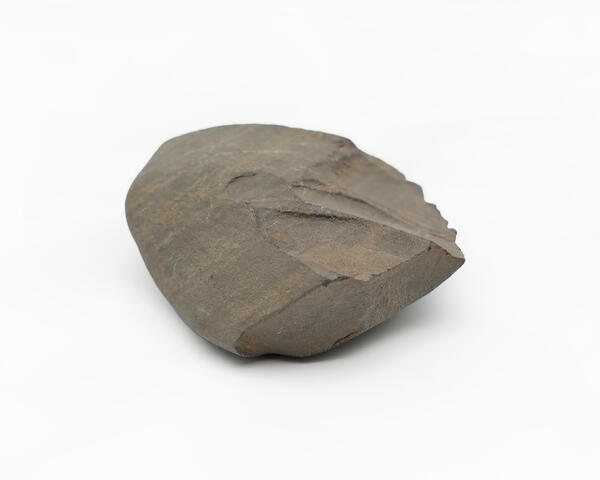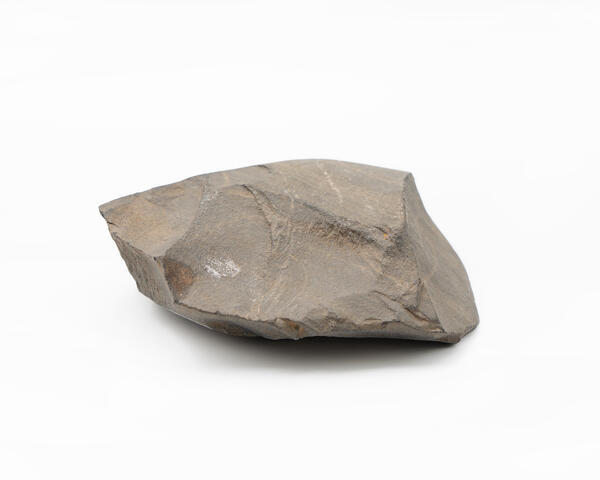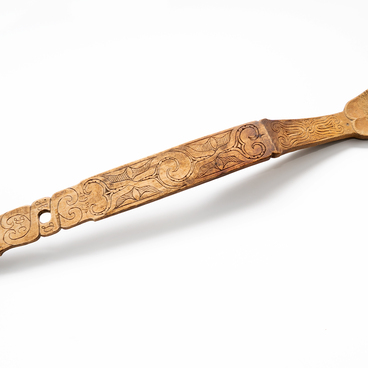The racloir presented in the museum’s collection was discovered as a result of archaeological research in the Amur River basin. Scientists have managed to establish that this object is more than 11 thousand years old. It was made of a large flat pebble, the craftsman gave a semicircular shape to the working edge and modified it for convenience with large wide flake scars on both sides.
The racloir was larger, but sometimes less functionally pronounced, than a scraper, or a combined stone scraper-cutting tool. Such objects were actively used in the Middle Paleolithic — the period of human development before the age of metals, which lasted from 40 to 200 thousand years ago. The museum exhibit belongs to the Upper Paleolithic period. Flint — a type of quartz, obsidian — volcanic glass, and other types of stone were used to make such tools.
Racloirs made from stone flakes could have one or more working edges with blades of various shapes: convex, straight, concave, pointed, serrated, with processing along the perimeter. The working edges, respectively, could form angular shapes.
Racloirs were used for cutting, as knives, as well as for processing animal skins, and when working with wood. With the spread of ceramics, in conditions of shortages of stone, fragments of vessels could serve as scrapers. It has been suggested that some of these tools were attached to short handles.
The small size of the scrapers found, as in the case of the museum exhibit with dimensions of 12 by 9 centimeters, is explained by the fact that the surfaces wore out during long work. To maintain the effectiveness of the tool, new flake scars had to be made — basically, sharpening was performed.
Similar products were
found both in the territory of present-day Europe, as well as in Asia and
America. Bone tools similar in purpose were used by the Eskimos. Currently,
depending on the application in handicraft and artisanal leather production,
knives, drawknives, scrapers, currier’s knives, even blades of ordinary scythes
perform a similar function.





